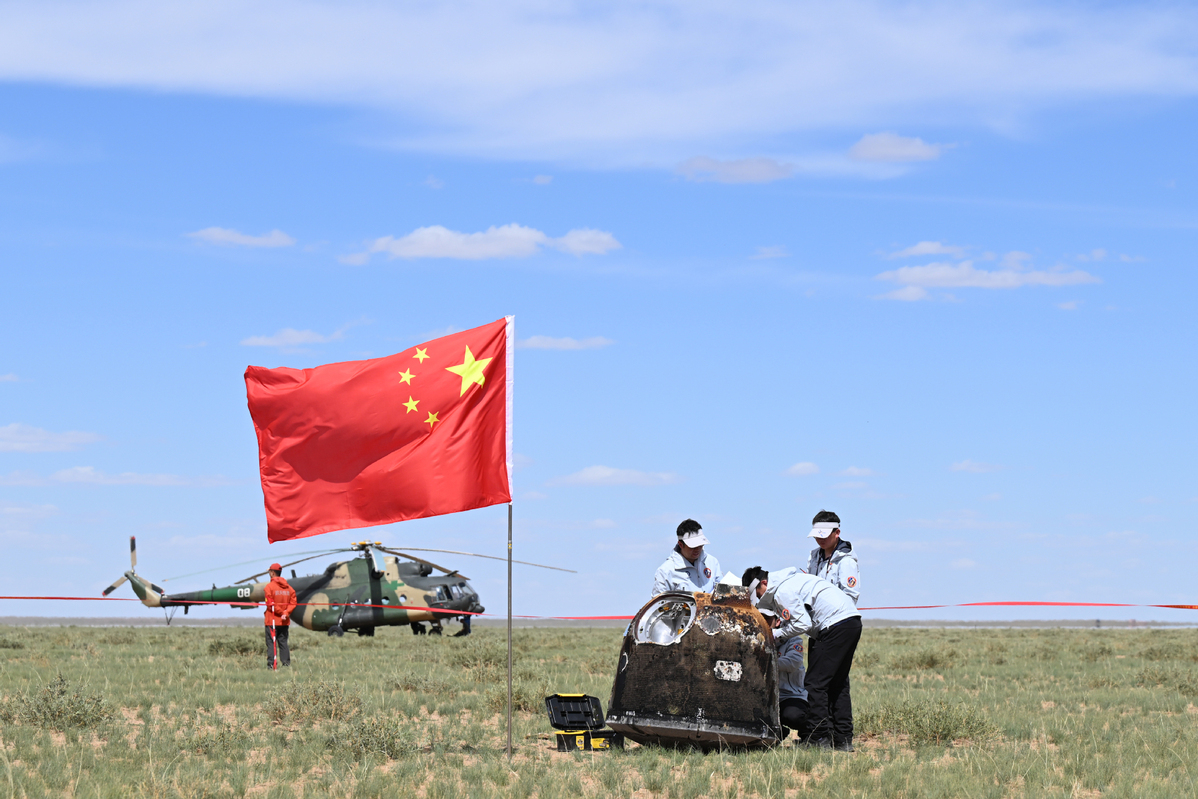Country's space endeavors part of a shared human story


Once upon a time, the tale of Chang'e flying to the moon existed only in Chinese folklore. But today, that ancient myth has been given a new, modern twist with actual moon samples making their way not to the palace of the moon goddess, but to the headquarters of the United Nations in Vienna.
On June 25, during the 68th session of the UN Committee on the Peaceful Uses of Outer Space, China organized an exhibition featuring lunar samples collected from both the near and far sides of the moon to celebrate 20 years of its lunar exploration program. The exhibition not only showcases China's remarkable technical achievements, but also offers a window into the country's vision of inclusive, peaceful and cooperative outer space exploration.
The lunar samples, collected by the Chang'e-5 and Chang'e-6 missions respectively, represent landmarks in space science. Chang'e-5's successful mission in 2020 made China the third country to retrieve materials from the moon after the United States and the Soviet Union. Chang'e-6 went even further, bringing back the first samples from the moon's far side in 2024, marking another remarkable achievement for China.
But China's space program is not just about national pride or technical triumphs. The underlying message of the exhibition is a clear one: China's space exploration is open to the world.
The journey of Chang'e lunar exploration projects is no longer a solitary leap but a shared path. Over the past two decades, whether through bilateral agreements, joint missions, data-sharing or talent exchanges, China has made cooperation an important part of its space ambitions. The Chang'e-6 mission, for example, carried scientific payloads from France, Italy, Pakistan and the European Space Agency.
China has agreed to share samples with other countries, because they belong not only to China, but also to the world, representing a shared treasure for all humanity. This approach reflects China's principle of enhancing international cooperation in space on the basis of equality and mutual benefit, peaceful utilization and inclusive development. In a world where geopolitical tensions sometimes spill into the space domain, China's emphasis on multilateralism and peaceful cooperation sends a timely and constructive signal.
China's space exploration achievements extend far beyond lunar missions. It made history with its Tianwen-1 mission to Mars, launched in July 2020 as China's inaugural independent interplanetary endeavor. This groundbreaking mission, for the first time ever, successfully deployed an orbiter, lander and rover on the Red Planet in a single launch.
China also operates two cutting-edge solar observation satellites in orbit. These sophisticated spacecraft have delivered significant breakthroughs, providing scientists with unprecedented insights into the behavior and characteristics of the sun.
In fact, China has gone a step further by proposing the establishment of an open and inclusive platform for deep-space exploration, inviting countries, developed and developing alike, to participate in upcoming missions. For example, China has signed cooperation agreements with 17 countries and international organizations on the International Lunar Research Station construction, offering various levels and forms of collaboration opportunities. The first batch of experimental projects selected through China's collaboration with the United Nations Office for Outer Space Affairs are being conducted aboard the Chinese space station.
And just like the legend of Chang'e, what once felt distant and mythical is becoming part of a shared human story.
































